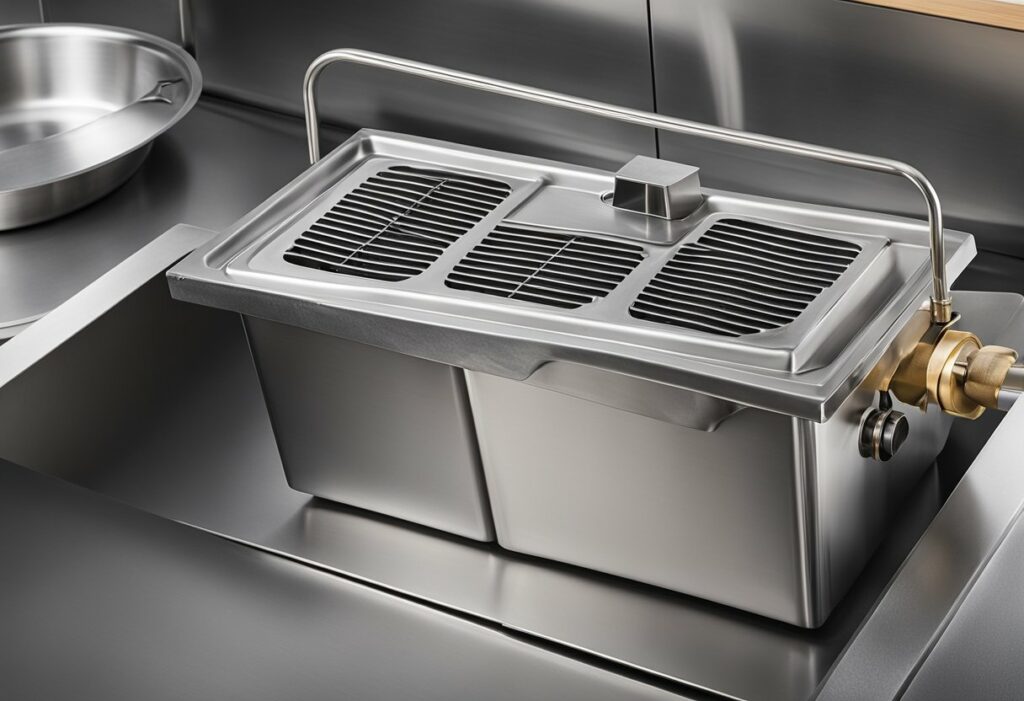Kitchen Grease Trap Design: Revolutionising Grease Management in Commercial Kitchens
If you own a restaurant or commercial kitchen, then you know how important it is to have a properly designed grease trap. Not only does it prevent grease and oil from clogging your pipes, but it can also help you comply with local regulations and avoid costly fines. In this article, we will cover the fundamentals of kitchen grease trap design, operational best practices, and compliance guidelines.
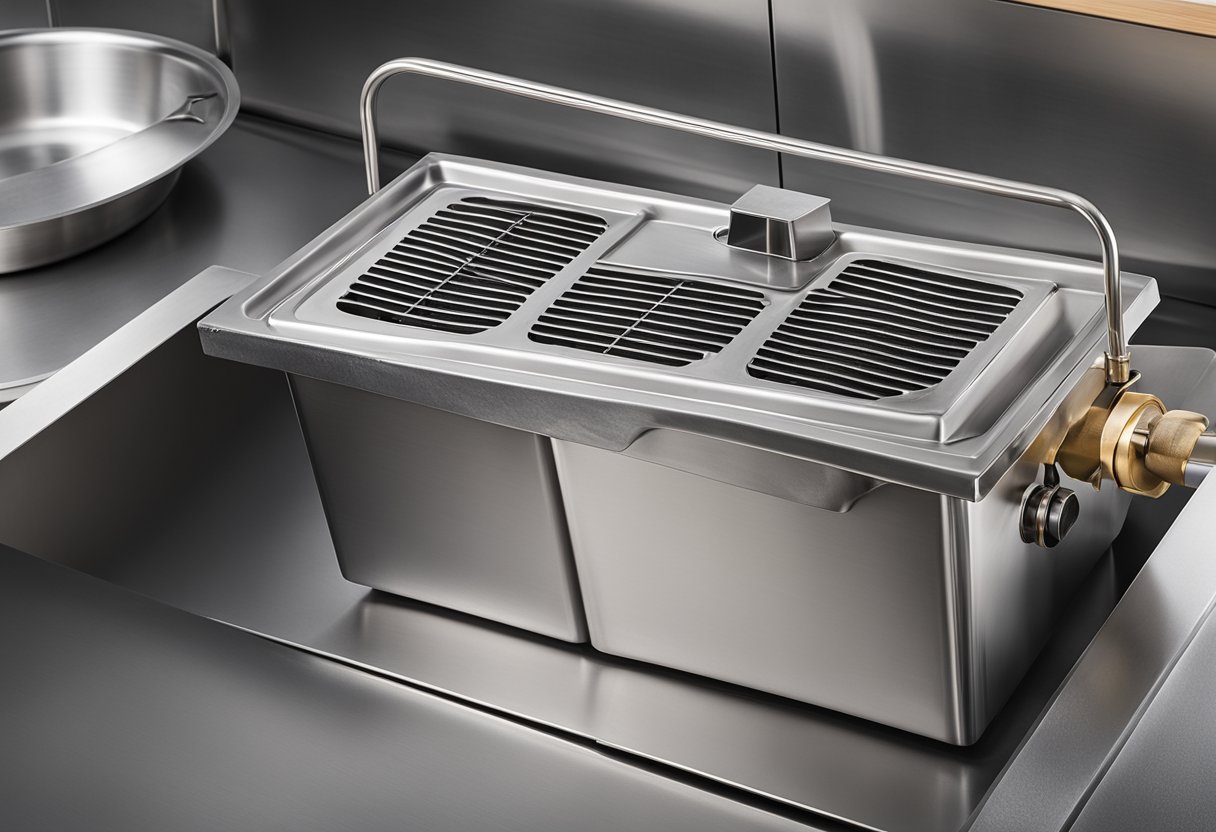
The design of your grease trap will depend on the size of your kitchen and the amount of grease you produce. There are several types of grease traps to choose from, including passive, automatic, and manual. Each type has its own advantages and disadvantages, so it’s important to choose the right one for your kitchen. We will cover the pros and cons of each type in this article.
Once you have installed your grease trap, it’s important to follow operational best practices to ensure it functions properly. This includes regular cleaning and maintenance, proper disposal of grease and oil, and monitoring the effectiveness of your grease trap. We will provide tips and guidelines for maintaining your grease trap and ensuring compliance with local regulations.
Key Takeaways
- Properly designed grease traps are essential for commercial kitchens and restaurants to prevent clogging and comply with local regulations.
- There are several types of grease traps to choose from, each with its own advantages and disadvantages.
- Following operational best practices and compliance guidelines is critical for maintaining the effectiveness of your grease trap and avoiding fines.
Fundamentals of Kitchen Grease Trap Design
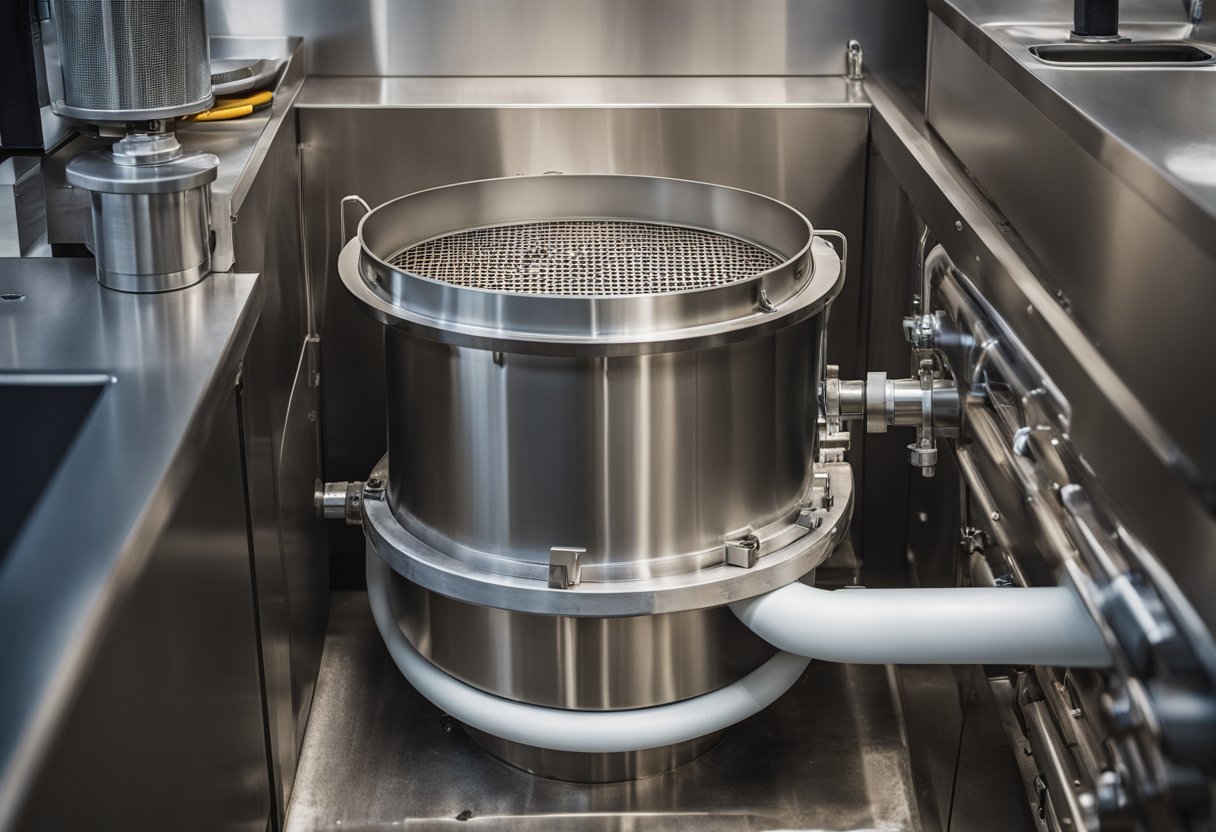
If you are designing a kitchen grease trap, you need to understand the basics of how it works. Grease traps, also known as grease interceptors, are designed to capture fats, oils, and grease (FOG) from wastewater before it enters the sewer system. This is important because FOG can cause blockages and damage to the environment.
Understanding Grease Traps
Grease traps work by using gravity to separate the FOG from the wastewater. When the wastewater enters the grease trap, it slows down, allowing the FOG to rise to the surface. The FOG is then trapped by baffles, which prevent it from flowing out of the trap. The cleaned water then flows out of the trap and into the sewer system.
There are different types of grease traps available, including hydromechanical grease traps and automatic grease traps. Hydromechanical grease traps use a combination of gravity and a mechanical device to separate the FOG from the wastewater. Automatic grease traps use sensors to detect when the trap needs cleaning and automatically remove the FOG.
Importance of Grease Trap Maintenance
Proper maintenance of your grease trap is essential to ensure its efficiency and performance. Regular cleaning and inspection of the grease trap is required to comply with local plumbing codes and regulations. The frequency of cleaning depends on the flow rate of wastewater and the size of the grease trap.
In addition to compliance, proper maintenance of your grease trap can also save you money in the long run. A well-maintained grease trap can prevent blockages and backups in your plumbing system, which can be costly to fix. It can also help extend the life of your equipment and prevent safety hazards.
When designing a grease trap, it is important to consider the size and capacity of the trap, as well as the flow rate of wastewater. The size of the grease trap is measured in gallons and should be chosen based on the FOG load and the volume of wastewater produced. The plumbing system should also be designed to ensure efficient flow of wastewater into the grease trap.
In conclusion, understanding the fundamentals of kitchen grease trap design is crucial to ensure compliance with laws and regulations, as well as to prevent damage to the environment and save money. Proper maintenance of your grease trap can also help extend the life of your equipment and prevent safety hazards.
Operational Best Practices and Compliance
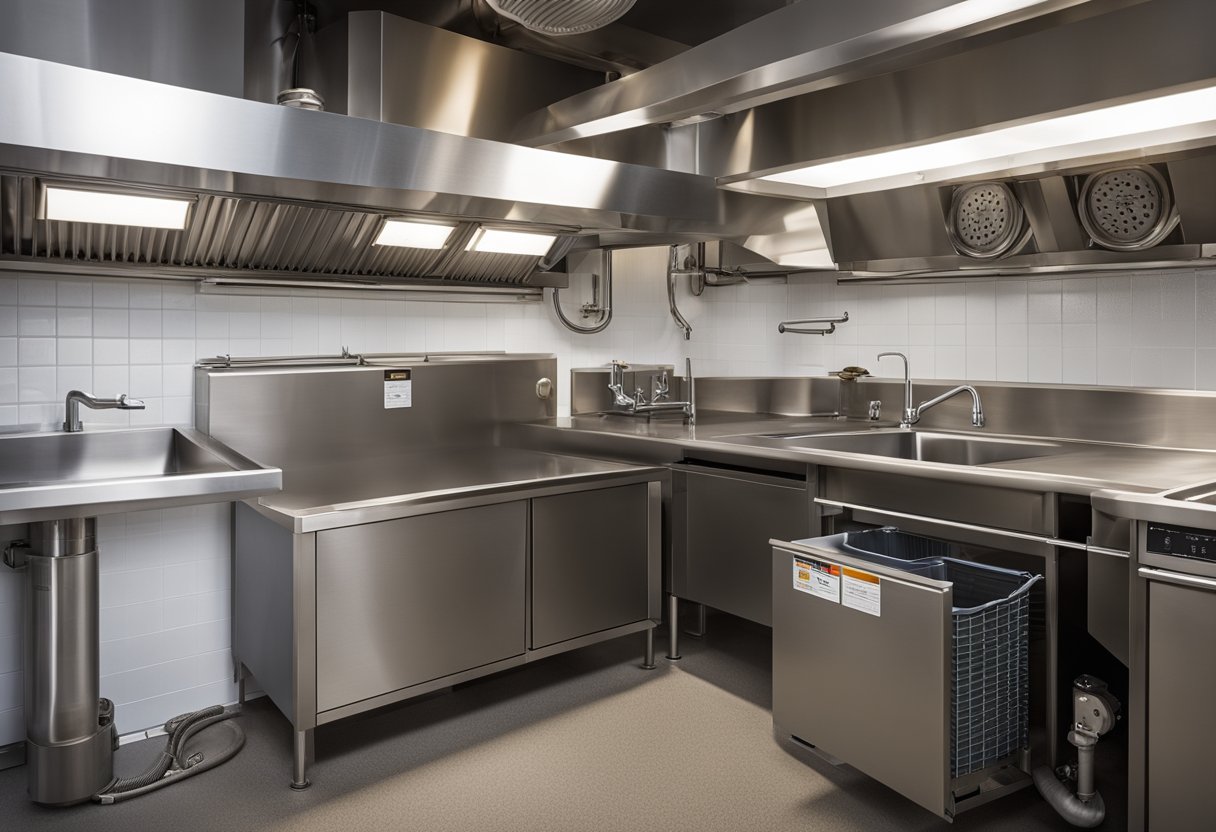
When it comes to maintaining your grease trap, there are a number of best practices and regulations that you need to follow to ensure that your commercial kitchen runs smoothly. Here are some tips to help you optimise your cleaning schedule and ensure compliance with regulations.
Optimising Cleaning Schedules
Regular cleaning of your grease trap is essential to prevent blockages and overflows, which can cause health risks and fines. The cleaning frequency of your grease trap will depend on a number of factors, such as the size of your establishment, the amount of food waste produced, and the cooking appliances used. As a general rule, underground grease traps should be cleaned at least once every three months, while pump grease traps should be cleaned at least once a month.
To optimise your cleaning schedule, you should consider installing compartment sinks for the disposal of food waste, which can help to reduce the amount of grease and oil that enters your grease trap. You should also ensure that your appliances are regularly serviced and maintained, as faulty equipment can cause blockages and overflows.
Ensuring Compliance with Regulations
To ensure compliance with regulations, it is important to follow the guidelines set out by the National Environment Agency (NEA) and PUB, Singapore’s National Water Agency. You should always hire a licensed plumber to install and maintain your grease trap, and ensure that your inlet and outlet pipes are properly connected.
You should also be aware of the health risks associated with grease trap cleaning, and take appropriate safety measures when emptying your grease trap. This includes wearing protective clothing and using appropriate equipment to prevent spills and odours.
By following these best practices and regulations, you can ensure that your commercial kitchen runs smoothly and safely, and avoid fines and health risks associated with grease trap overflows.
Frequently Asked Questions
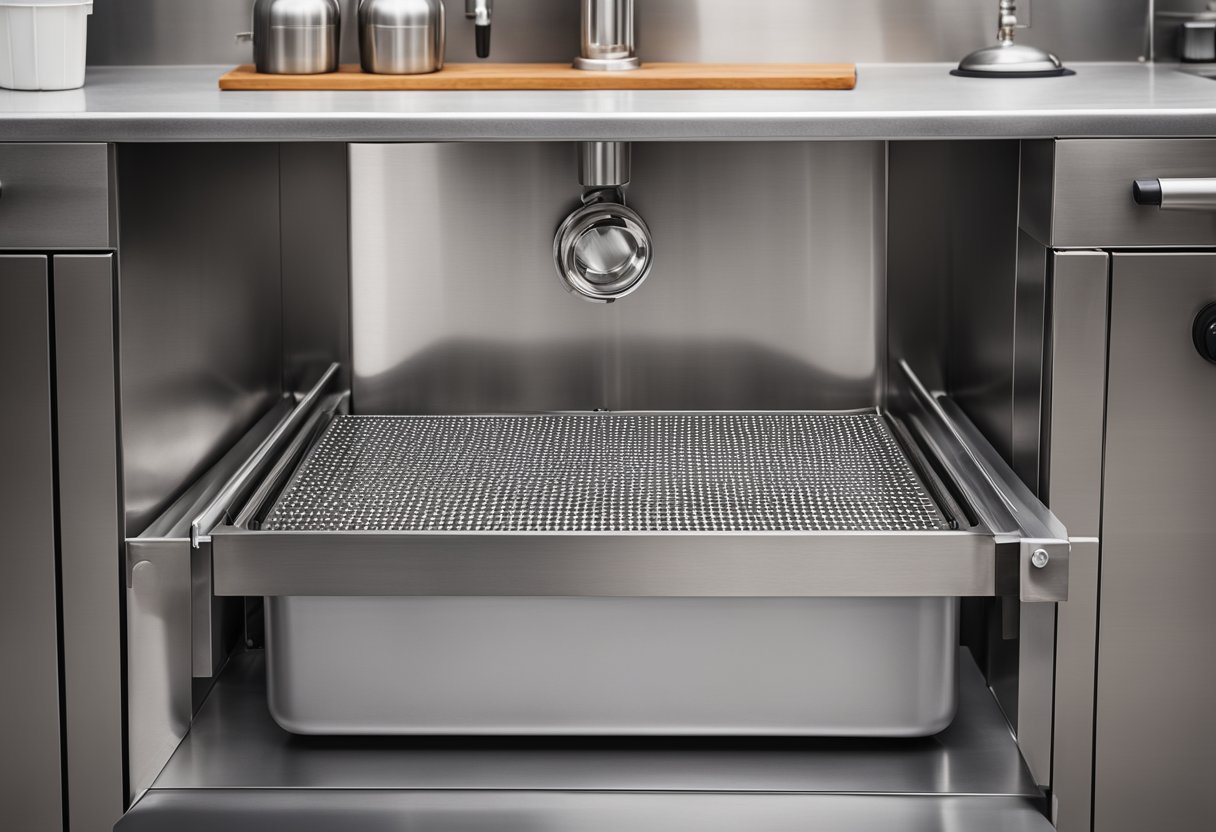
What’s the ideal size for a grease trap in a commercial kitchen?
The size of a grease trap depends on the amount of wastewater generated by your commercial kitchen. However, as a rule of thumb, the grease trap should be at least 25% larger than the peak flow rate of your kitchen. PUB, Singapore’s National Water Agency provides comprehensive guidelines on the sizing of grease traps.
How can I select the perfect grease trap for my kitchen requirements?
Choosing the right grease trap for your kitchen can be a daunting task. You need to consider factors such as the size of your kitchen, the amount of wastewater generated, and the type of cooking equipment you use. It’s best to consult with a professional to help you select the perfect grease trap for your kitchen requirements.
Is a grease trap an essential component for every kitchen setup?
Yes, a grease trap is an essential component for every commercial kitchen setup. It’s designed to capture and separate fats, oils, and grease (FOG) from wastewater, preventing them from clogging the plumbing system and causing potential damage.
Could you explain the critical design criteria for an efficient grease trap?
An efficient grease trap should have a minimum of two compartments to allow for separation of fats, oils, and grease from wastewater. The inlet and outlet baffles should be designed to prevent the FOG from escaping. The grease trap should also have a solids interceptor screen to prevent solids from entering the grease trap and clogging the system.
Where can I find comprehensive guidelines for grease trap installation?
You can find comprehensive guidelines for grease trap installation from PUB, Singapore’s National Water Agency. The guidelines cover installation requirements, maintenance, and cleaning procedures.
What calculations are necessary for designing a grease trap to meet my kitchen’s needs?
Several calculations are necessary for designing a grease trap to meet your kitchen’s needs. These include peak flow rate, wastewater volume, and the retention time required for the grease trap. A professional can help you with the necessary calculations to ensure that your grease trap meets your kitchen’s needs.

